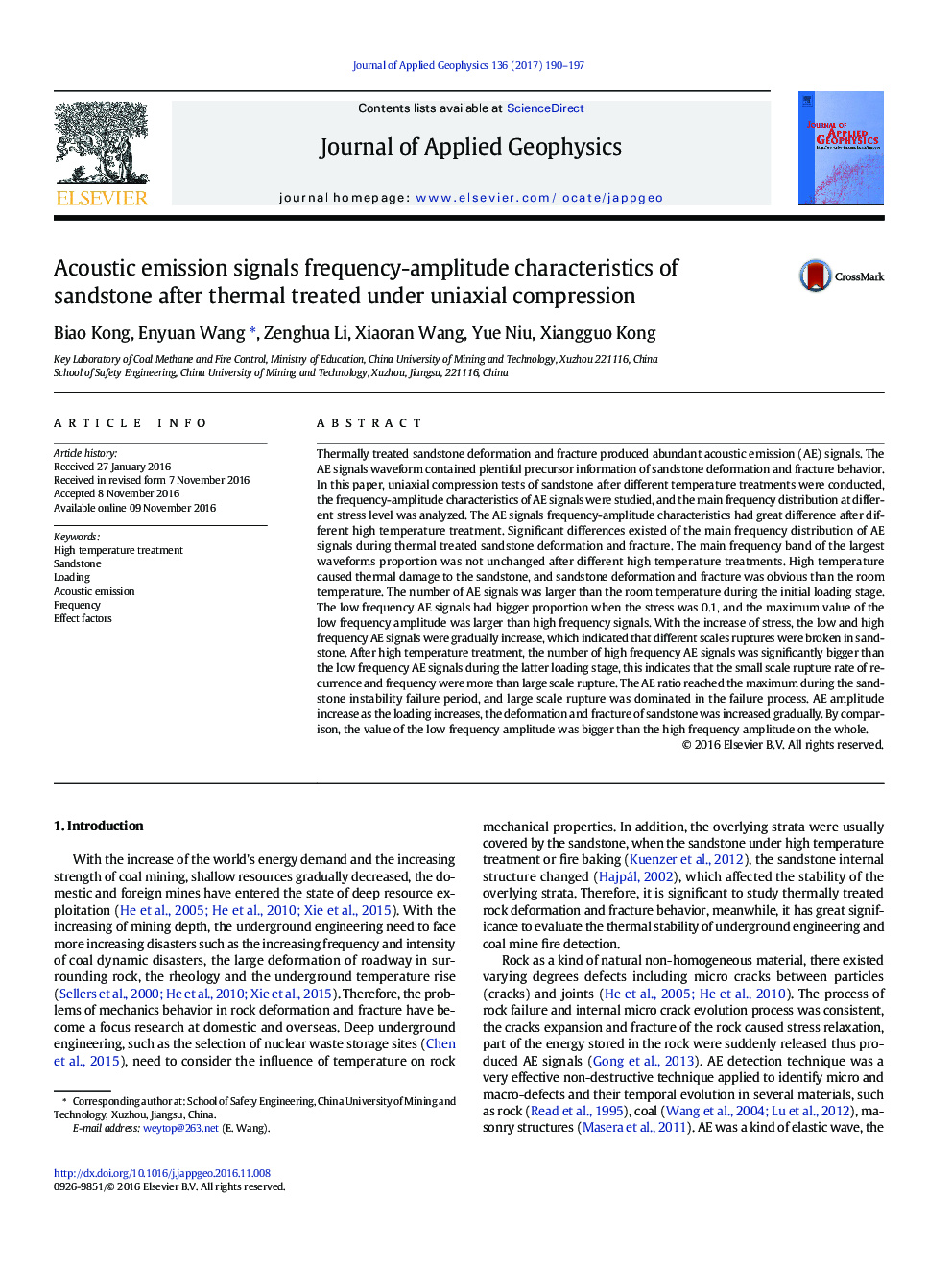| کد مقاله | کد نشریه | سال انتشار | مقاله انگلیسی | نسخه تمام متن |
|---|---|---|---|---|
| 4739682 | 1641115 | 2017 | 8 صفحه PDF | دانلود رایگان |
• The acoustic emission frequency-amplitude characteristics of thermally treated sandstone deformation were studied.
• The frequency distribution and characteristics at different stress levels were analyzed.
• The reasons of acoustic emission frequency-amplitude differences were discussed.
Thermally treated sandstone deformation and fracture produced abundant acoustic emission (AE) signals. The AE signals waveform contained plentiful precursor information of sandstone deformation and fracture behavior. In this paper, uniaxial compression tests of sandstone after different temperature treatments were conducted, the frequency-amplitude characteristics of AE signals were studied, and the main frequency distribution at different stress level was analyzed. The AE signals frequency-amplitude characteristics had great difference after different high temperature treatment. Significant differences existed of the main frequency distribution of AE signals during thermal treated sandstone deformation and fracture. The main frequency band of the largest waveforms proportion was not unchanged after different high temperature treatments. High temperature caused thermal damage to the sandstone, and sandstone deformation and fracture was obvious than the room temperature. The number of AE signals was larger than the room temperature during the initial loading stage. The low frequency AE signals had bigger proportion when the stress was 0.1, and the maximum value of the low frequency amplitude was larger than high frequency signals. With the increase of stress, the low and high frequency AE signals were gradually increase, which indicated that different scales ruptures were broken in sandstone. After high temperature treatment, the number of high frequency AE signals was significantly bigger than the low frequency AE signals during the latter loading stage, this indicates that the small scale rupture rate of recurrence and frequency were more than large scale rupture. The AE ratio reached the maximum during the sandstone instability failure period, and large scale rupture was dominated in the failure process. AE amplitude increase as the loading increases, the deformation and fracture of sandstone was increased gradually. By comparison, the value of the low frequency amplitude was bigger than the high frequency amplitude on the whole.
Journal: Journal of Applied Geophysics - Volume 136, January 2017, Pages 190–197
